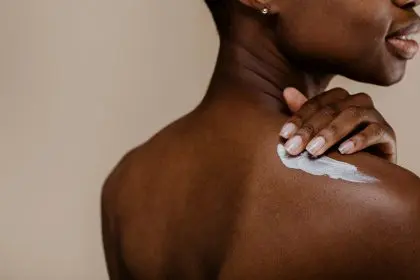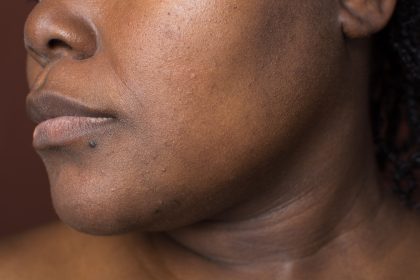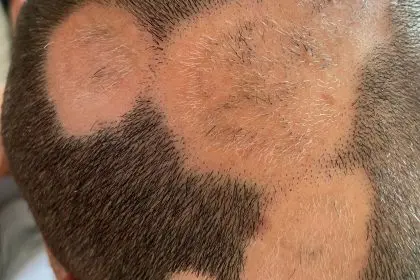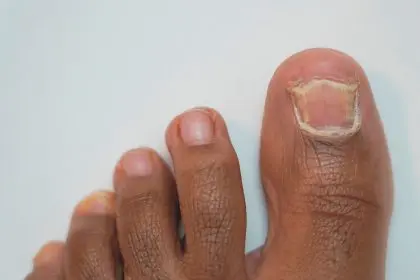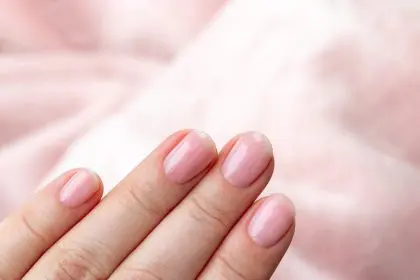That heart-stopping moment when you look down at your brush and see what seems like an alarming amount of hair – we’ve all been there. But before you panic, top dermatologists want you to know that what you’re seeing might be completely normal. In fact, that clump of hair might actually be a sign your scalp is doing exactly what it should.
The shocking truth about daily hair loss
That pile of hair in your shower drain might look terrifying, but hair specialists reveal that losing between 50 to 100 strands daily is not just normal – it’s necessary for healthy hair growth. This natural shedding process makes way for new, healthy strands to emerge, keeping your hair cycle functioning properly.
Why your hair falls out in the first place
Your hair follows a natural cycle of growth, rest, and shedding, much like how your skin constantly renews itself. Think of it as your body’s way of maintaining healthy hair – out with the old, in with the new. This process happens continuously, with different hair follicles being in various stages at any given time.
The difference that could save your hair
Hair specialists emphasize a crucial distinction that every person needs to understand: the difference between normal shedding and concerning hair loss. While shedding is part of your hair’s natural renewal process, actual hair loss involves changes that could lead to lasting thinning or bald patches if not addressed.
Signs your shedding isn’t normal
Dermatologists point out several warning signs that indicate your hair loss might need professional attention. These include noticing your part getting wider, seeing your scalp more easily through your hair, or finding unusual patterns of hair loss on your scalp.
The hidden causes of excessive hair loss
Several factors can trigger increased hair shedding or loss, and identifying the cause is crucial for proper treatment. Stress, hormonal changes, dietary deficiencies, and certain medications can all impact your hair’s growth cycle. Understanding these triggers can help you take appropriate action before the situation worsens.
Your daily habits might be the culprit
Hair specialists reveal that common styling practices could be contributing to your hair concerns. Tight hairstyles, excessive heat styling, and harsh chemical treatments can damage hair follicles and lead to permanent hair loss if not addressed.
The diet connection you can’t ignore
What you eat plays a crucial role in your hair’s health. Hair experts emphasize the importance of specific nutrients for maintaining strong, healthy hair. A diet lacking in protein, iron, or essential vitamins can lead to increased shedding and weakened hair growth.
The stress factor
The relationship between stress and hair loss is more significant than many realize. Chronic stress can push large numbers of hair follicles into a resting phase, leading to increased shedding months later. This type of hair loss, while alarming, is usually temporary if the underlying stress is addressed.
Solutions that actually work
Hair specialists recommend several proven approaches to address hair concerns. For normal shedding, maintaining gentle hair care practices and a nutrient-rich diet often suffices. For actual hair loss, early intervention with appropriate treatments can help prevent permanent damage.
The supplement situation
While many supplements claim to promote hair growth, not all are created equal. Dermatologists point to specific supplements that have shown promising results in clinical studies. However, they caution against relying solely on supplements without addressing underlying causes of hair loss.
Natural remedies worth trying
Some natural treatments have gained attention for their potential benefits in promoting hair health. Rosemary oil, in particular, has shown promise in scientific studies, with results comparable to some conventional treatments. However, experts emphasize the importance of proper application and consistent use for best results.
The professional treatments making waves
Recent advances in hair loss treatment have introduced new options for those dealing with significant thinning. From platelet-rich plasma therapy to low-level laser treatment, these innovative approaches offer hope for those struggling with persistent hair loss.
When to seek professional help
Hair specialists emphasize that timing is crucial when dealing with hair loss. Waiting too long to seek treatment can limit your options and reduce the effectiveness of available treatments. Certain symptoms should prompt immediate consultation with a dermatologist.
The emotional impact
The psychological effects of hair loss shouldn’t be underestimated. Many people experience significant emotional distress when dealing with hair loss, and addressing these feelings is an important part of the treatment process.
Prevention strategies that work
While some causes of hair loss can’t be prevented, many can be minimized through proper hair care and lifestyle choices. Experts recommend several strategies to maintain healthy hair and prevent unnecessary damage.
The role of genetics
Understanding your family history of hair loss can help you take proactive steps to maintain your hair health. While you can’t change your genes, early awareness can lead to more effective prevention and treatment strategies.
Environmental factors to consider
Your environment plays a larger role in hair health than you might think. Everything from water quality to air pollution can impact your hair’s health and growth cycle. Understanding these factors can help you protect your hair more effectively.
Future treatments on the horizon
Research into hair loss continues to advance, with new treatments showing promising results in clinical trials. While these developments offer hope for better solutions in the future, experts emphasize the importance of addressing hair concerns with currently available, proven treatments.
Making informed decisions
With so many treatment options available, choosing the right approach can feel overwhelming. Hair specialists recommend starting with a professional evaluation to determine the exact cause of your hair concerns before investing in treatments.
The long-term outlook
Understanding that hair loss treatment often requires patience is crucial. While some treatments may show quick results, lasting improvement typically requires consistent treatment and lifestyle changes over time.
Remember, while hair loss can be distressing, many effective solutions exist. The key is identifying whether you’re experiencing normal shedding or problematic hair loss, and taking appropriate action. Working with a qualified professional can help you develop a personalized treatment plan that addresses your specific needs and concerns.


